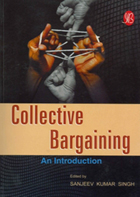The Danish Flexicurity Model: The Role of the Collective Bargaining System
Article by Søren Kaj Andersen & Mikkel Mailand
 Flexibility in the arrangement of wage and working conditions is widely debatted with regard to the 406 million workers in the Indian work force. The debate is especially focused on the extensive legislative regulation of the Indian labour market. ICFAI University Press just published the book Collective Bargaining - An Introduction. The editor, Sanjeev Kumar Singh, emphasizes that collective bargaining can be seen as an alternative to legislative regulation - an alternative, which solve conflicts and secure democracy at the workplace. In other words, the book is both an introduction to and an argument for collective bargaining.
Flexibility in the arrangement of wage and working conditions is widely debatted with regard to the 406 million workers in the Indian work force. The debate is especially focused on the extensive legislative regulation of the Indian labour market. ICFAI University Press just published the book Collective Bargaining - An Introduction. The editor, Sanjeev Kumar Singh, emphasizes that collective bargaining can be seen as an alternative to legislative regulation - an alternative, which solve conflicts and secure democracy at the workplace. In other words, the book is both an introduction to and an argument for collective bargaining.
In addition to introductory articles on collective bargaining, the book includes contributions about the development of the bargaining system in selected countries. Among these is Søren Kaj Andersen and Mikkel Mailand's article The Danish Flexicurity Model: The Role of the Collective Bargaining System.
Article in Sanjeev Kumar Singh (ed.): Collective Bargaining - An Introduction, Icfai University Press, 2007.
